Last month we had the launch of Suicide Squad: Kill the Justice League, the sequel of the Arkham games, developed by Rocksteady, the company responsible for the entire saga.
The Um Gamer team tested the game on PC (via Steam) for this review. We will cover the campaign in this article, but rest assured there will be no spoilers.
Performance and graphics issues will be mentioned! Therefore, below are the specifications of the PC used for this review:
Audiovisual Questions
Suicide Squad's graphics are good and very satisfactory, especially in the cutscenes, with a shout-out to facial expressions and movement capture, which sound natural and correspond well to each sequence.
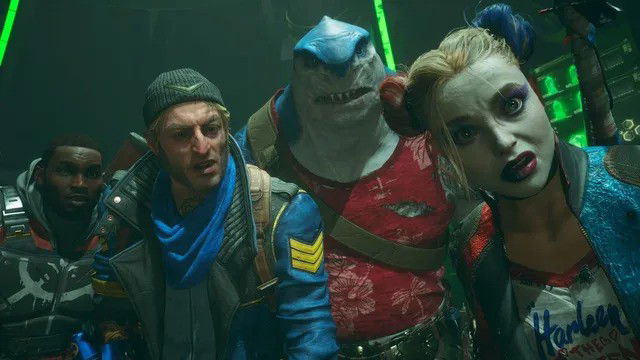
Animations during gameplay and combat follow this same quality, the characters' postures in movements and skills are excellent.
The only problem with this topic is the large amount of information the game brings. In addition to a cluttered interface at times, with a combo counter, additional challenges, ammunition, skills and other things. During combat, we are exposed to many explosions, gunshots and other animations, which are annoying and even a bit disruptive.
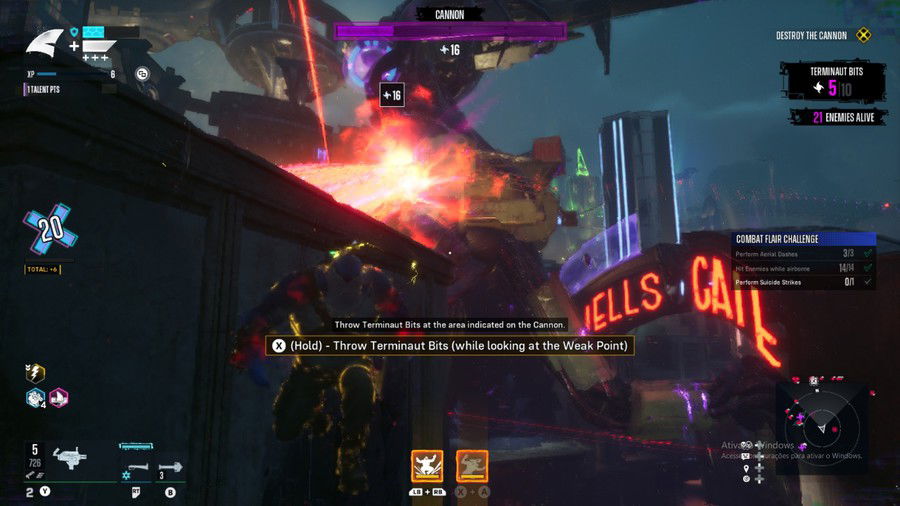
As for the audio, the title offers pleasant dubbing, but lacks the presence of notable songs on the soundtrack.
Spoiler-Free Analysis: Campaign Mode
The campaign features the four villains who are now part of Task Force X as protagonists. In this context, the Justice League is being controlled by Brainiac, and the Suicide Squad's duty is to stop them, as shown in the game's title and trailers.
The game has serious plot holes. Some facts have not been elaborated and make it difficult to imagine how the strongest heroes on the planet were simply controlled by Brainiac.
Story is not the game's focus
Even before its release, it was clear that Suicide Squad: Kill the Justice League would be as a service, with constant content and season releases, but it was sold in the trailers that the campaign was its focus, generating expectations among players that were not met.
Point of view is essential for your verdict on the campaign. If you're just expecting a basic story to place you in the game's universe, it delivers, and very well. But, if you are looking for a focus on the story, with extraordinary missions, and want to compare it with previous titles, the campaign is flawed.
We had the impression that the plot was the main content, and it was the right thing to do, it was a mistake to continue this saga with a game as a service. All the titles in the Arkham trilogy were successful with an impeccable plot, moving away from this and focusing on another type of content alienates the public who was used to its formula.
Villains as Main Characters
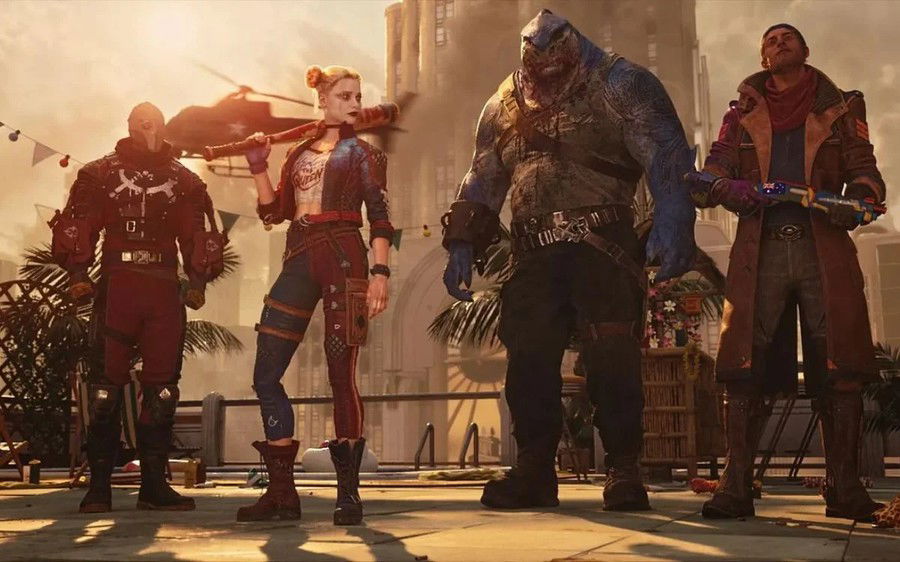
Much of the criticism refers to having villains as the only playable characters, a relevant but very personal point.
Actually, making a Justice League game could be more advantageous to attract many fans, it is more eye-catching to control characters like Batman, Superman, Flash, among others. The gameplay would be even more fun with superpowers, the heroes are also much more relevant than the entire Suicide Squad.
However, Warner Bros' proposal was a villains' game, so it was expected not to control any heroes, if we look at the campaign from this perspective, I see no problem in treating the Justice League as enemies, but with one caveat: it was surreal to see weak villains, without many powers, go head-to-head with the League, there are some contexts in the story that try to reduce this disparity. But even so, there would be an immense discrepancy in power between them, the main characters have nothing more than some equipment and firearms to fight them, after all.
Was the DC universe respected?
There are several moments where we witness some contradictory facts with the past content in the Arkham saga or with the DC universe itself that we have seen since the comics. I won't go into depth on this subject to avoid spoilers, but it's a critical topic for the most engaged fans in this world, and they probably won't be happy with the result.
Suicide Squad has a good campaign?
Don't expect an epic plot fully consistent with the DC universe, or a game filled with lore and immersive missions.
There is a very long time before the first boss fight, it took me around 7 hours to face the first hero, at the end of Chapter 3, and until then, most of the missions are generic and repetitive. This can be annoying because many people look for the game just to face the heroes.
It is clear, especially in Chapter 1, that the gameplay is not so rushed. After a scene, we do a mission lasting three to seven minutes, and then we have another cutscene, this is repeated a few times. Although the scenes are one of the main highlights of the game, it is not attractive to have such fast gameplay in the missions.
Overall, given all the context, it delivers a good story to introduce us to this new universe. The cutscenes are great, and the campaign time, which is around 12 to 17 hours, was a positive surprise, despite the delay in facing the heroes.
Gameplay
It's one of the best points in the game, until we come to, again, certain caveats.
The movement is great, each character has their own unique mechanics with different animations and effects: Deadshot has a jetpack; King Shark makes big jumps; Harley Quinn uses some ropes and harpoons; Captain Boomerang throws his boomerang and can teleport towards it.
It is also possible to do some advances, races, other movement mechanics. The problem is when we have to remember all the commands in the middle of combat.
Combat
Although it was quite fun, I found it difficult due to the amount of resources available to the player. These are melee attacks, shots with primary and secondary weapons, “special strike” in an area, “special strike” on a single target, aerial strike, grenades, counter-attack, among others.
We are also introduced to some mechanics, for example, if an enemy has a shield, it will only be broken with a melee attack. To recover your shield, you need to shoot an enemy in the leg until a “blue fire” appears on it, you will still need to deal damage with a melee blow to generate shields.
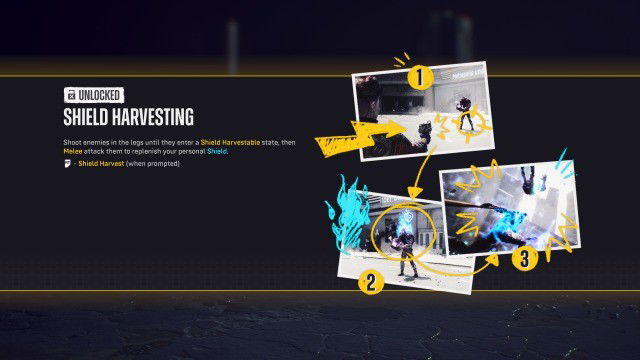
All of this makes the game a little more complex, but with a few hours of gameplay it is possible to adapt to the controls and combat becomes a plus.
However, the battles are always chaotic, there are always several enemies on the map, and you find yourself surrounded by them, with shields, shots and explosions. Along with the polluted interface, it makes for an unpleasant experience.
Finally, it doesn't give the feeling that we are actually controlling some of the game's characters during combat, as its main source of damage is common firearms that don't do justice to a DC game.
Of course, there is a context around them in the case of Harley Quinn and Deadshot, but failing to execute a sequence of attacks with the Captain's boomerang, or violent blows and bites with the King Shark is disappointing.
Don't get it wrong, there are unique attacks for them, but not a combo or a sequence of these attacks, their main source of combat will almost always be a firearm.
Missions
Definitely the worst aspect of Suicide Squad. The missions during the campaign were shallow.
They all have the same proposal, go to a certain point and kill enemies, this occurs on both main quests and side quests and ends up being too exhausting. Sometimes your objective is to dominate a point, sometimes to rescue civilians, but it's always the same structure of arriving and eliminating mobs to complete the task.
In certain cases, enemies have a specificity like “They only take damage from grenades.”, or “Melee attacks don't work on this enemy.” to provide better dynamics and diversity in tasks, but it is not enough.
More innovative experiences were limited to boss fights, which made them very sporadic.
Progression
Right during the campaign, we already have some progression features present. Like free boxes that grant items upon successfully completing a mission, each item has a rarity and a specific quantity for each status, as well as unique buffs for each of them.
Each character has three skill trees, totaling twelve. This resource is called talent, and we are gradually releasing talent points to select which benefits we want on the team.
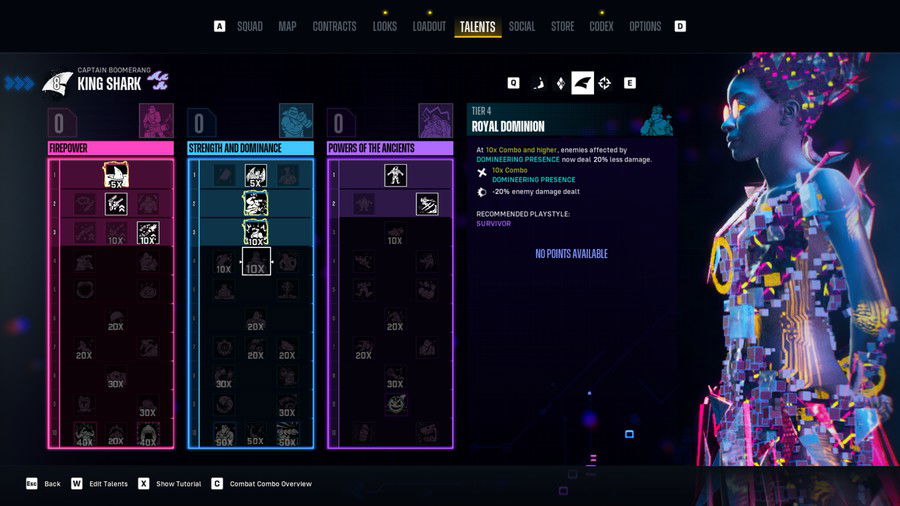
Another good mechanic is the contracts, some tasks that grant resources when completed, the first three contracts completed on the day provide a daily bonus.
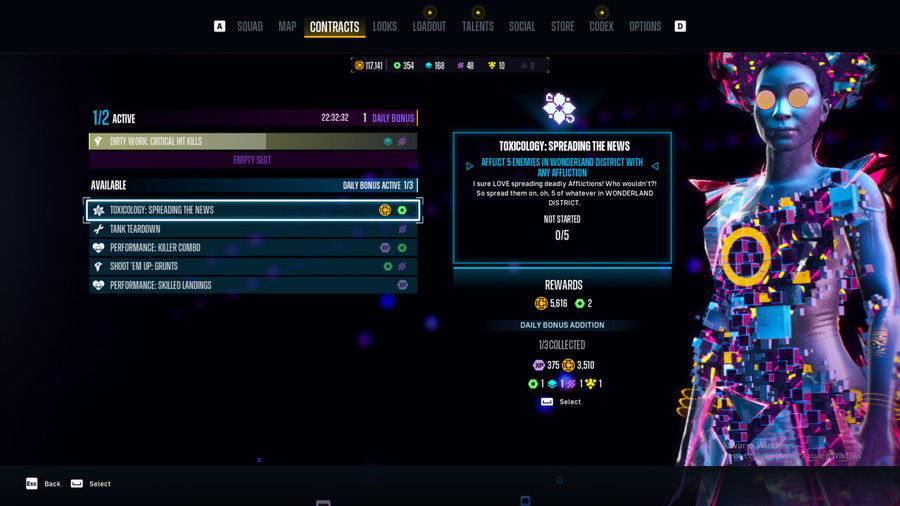
Suicide Squad allows you to create builds, combining weapons with specific talents. But everything is so chaotic in the fights that, honestly, we don't even see that much difference and effectiveness in the talents.
I feel like it's possible to finish the story just by putting the weapon with the best stats and adding talents randomly, but if it's worked on to become more relevant, will certainly add a lot to the builds.
Endgame and Open World
After finishing In the campaign, we have a relatively large open world to explore, with endgame features.
Starting with the Support Squad missions. It is not necessarily an endgame mechanic, as it is possible to perform them before even finishing the campaign, but it is part of the open world and is worth mentioning here.
These are tasks that interact with the story's secondary characters, and when completed, they offer some benefits. These are much more relevant than talents. For example, take this mission, its reward is an extra contract slot, which will optimize my reward farm in the future.
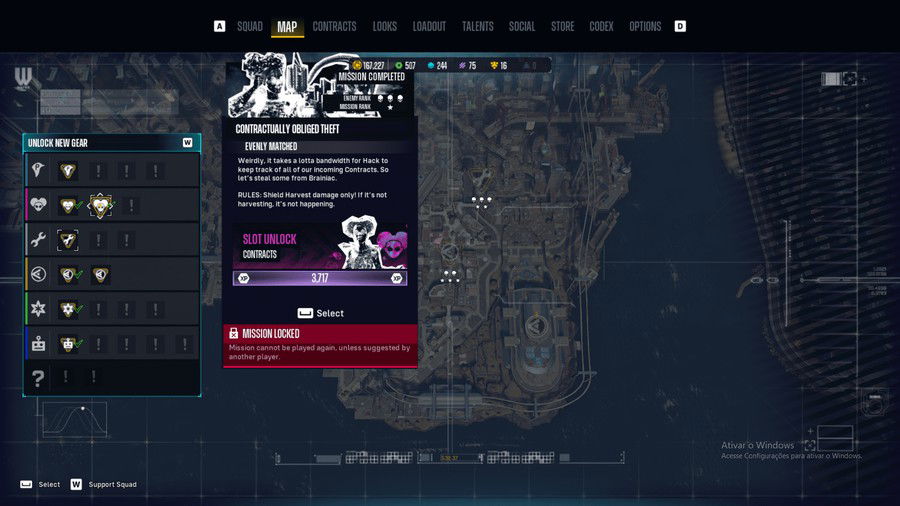
In the open world it is also possible to find some Riddler icons, we have a lot of interaction with him. Starting with some Riddler trophies, without much use other than collecting and seeking some achievement. The same observation for his riddles, in certain places in the world we see a pun of his implying something, we have to activate a scanner and point to the answer to that riddle, but I don't see it adding much to the characters.
Finally, the most interesting thing are the races, which offer rewards for completing them in a specific time. They work in that famous style of passing between the rings.
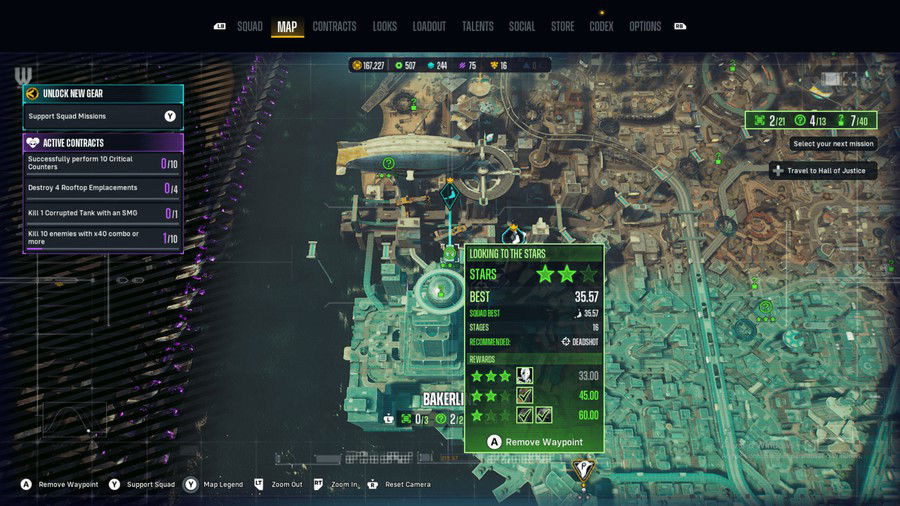
Moving on to the actual post-campaign:
When entering for the first time, we have three difficulty options: Walk in the Park, Best Pay Attention and Sweating Bullets. But in the endgame, new difficulties, called Invasion Levels, will appear to challenge the most hardcore players. To clear them, it is necessary to obtain a specific amount of XP on the highest difficulty.
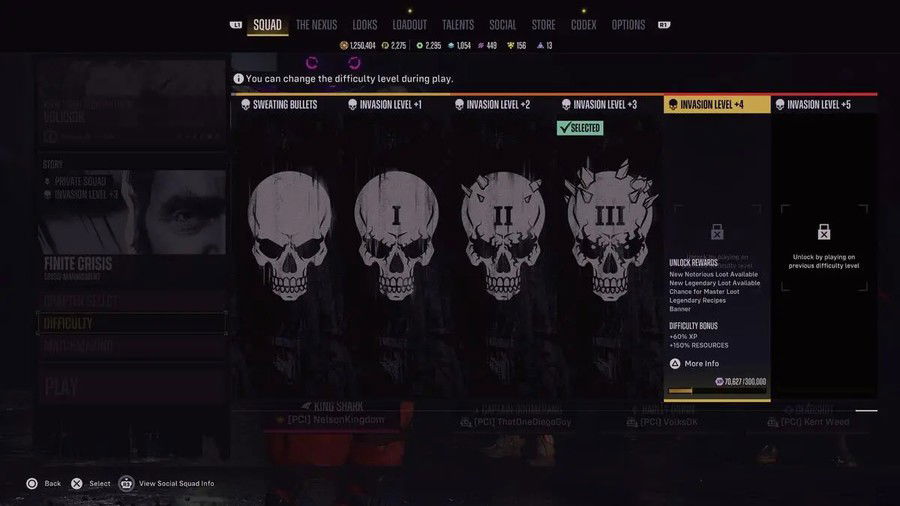
Some tasks will begin to give an additional resource as a reward, a resource that is a kind of “currency” for entering raid missions. They are difficult; however, they grant more rewards, including a set of rare Infamy weapons.
Overall, it's an endgame full of options and with hours of gameplay to farm and progress with your troops, the problem is once again the same, repetitive missions and not-so-interesting builds. It doesn't make much sense to progress your characters if you don't see the relevance of changing a weapon or talent.
It is worth mentioning the title will bring seasonal updates, with its first season starting on March 28, featuring the Joker as a playable character.
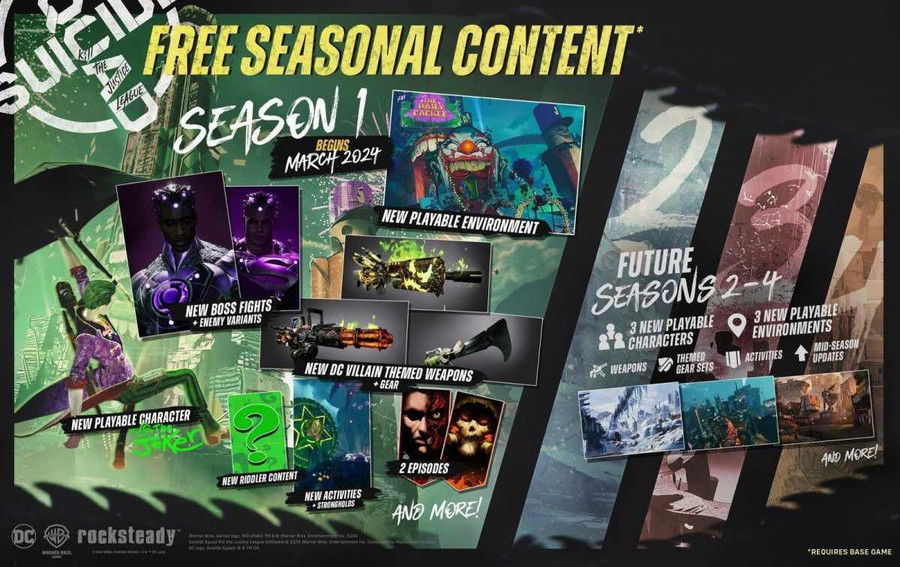
Performance
I played most of the game on live broadcasts, and I'm pleased to say that I didn't experience any crashes or major problems.
At times, I felt small crashes which interfered with immersion, but nothing too serious. These FPS drops occurred even when I wasn't live, which surprised me, but wasn't frustrating.
During my review, I didn't witness any bugs, demonstrating the care taken in the quality of the final product in this regard.
Must be Online
Speaking of performance, it is worth mentioning that Suicide Squad: Kill the Justice League requires being always online. This was a huge disappointment, given that there is a story mode and other features that you can enjoy alone, but you still need the internet.
I put my Steam in offline mode and opened the game, this was the error which appeared before even reaching the main menu, that is, it is not really allowed to access even the single player features.
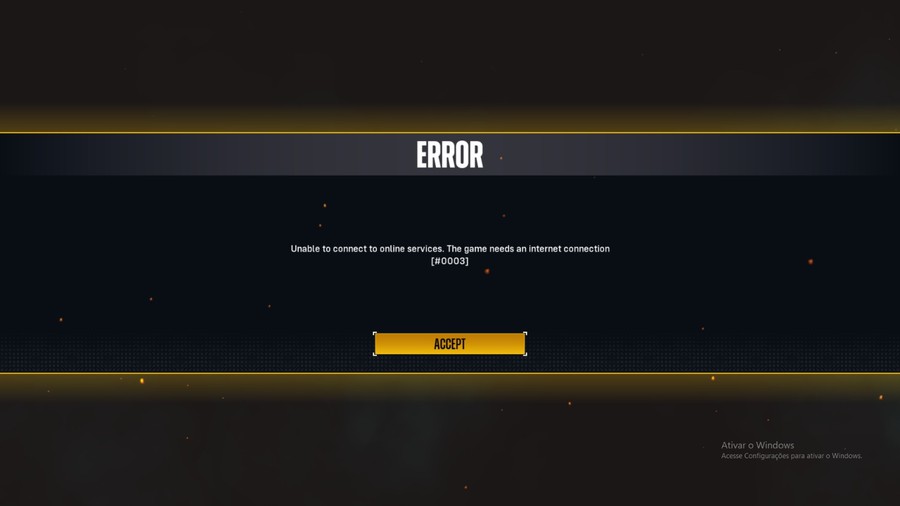
It is understandable the game focuses on being an as a service offering content and seasons constantly and thus bringing a multiplayer experience, but it is also necessary to understand that superhero fans have become accustomed to offline titles.
Adding online resources can be a great way to keep Suicide Squad going strong for many years, but there is the possibility of compromising the solo experience, even more so if there is a problem or outage on the company's own server.
Pros and Cons
Pros
Cons
Score
5.5 / 10
Conclusion
The title isn't as bad as many say, but it is disappointing. I don't recommend buying Suicide Squad: Kill the Justice League at full price, but it's a game that demands attention.
There is great potential in it, the gameplay is fun, despite using plenty of firearms, and the graphic quality and animation are excellent. However, many changes will be necessary, the main ones being: making the build system more relevant, bringing a more user-friendly interface and introducing new mission styles to diversify the game.
In a good sale it can be worth it, I also believe that, with the seasons, the game can become better. But today it will be rated 5.5 out of 10.
I hope this review has provided you more information about Suicide Squad: Kill the Justice League, I'm available in the comments for any questions.

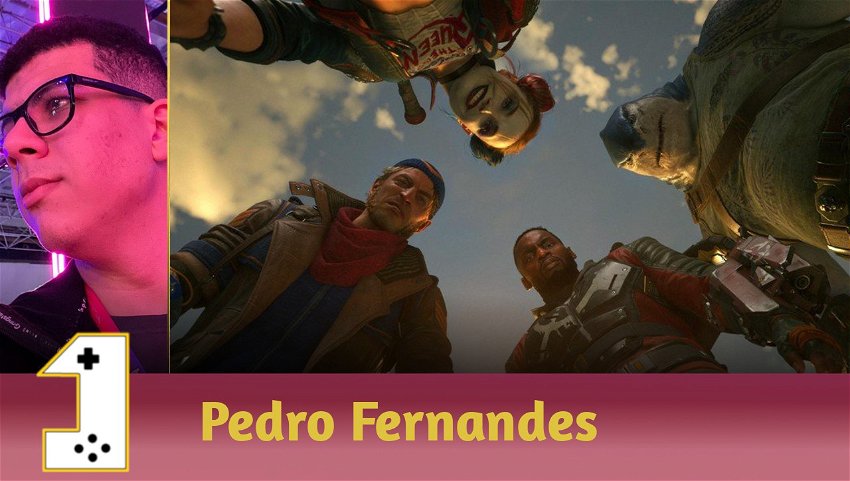






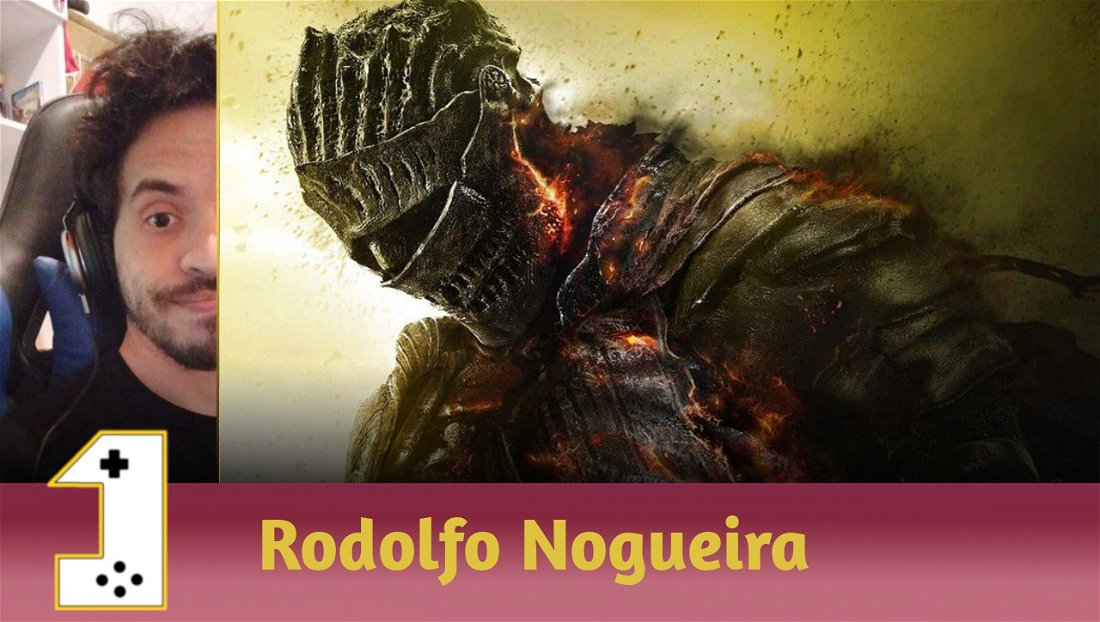
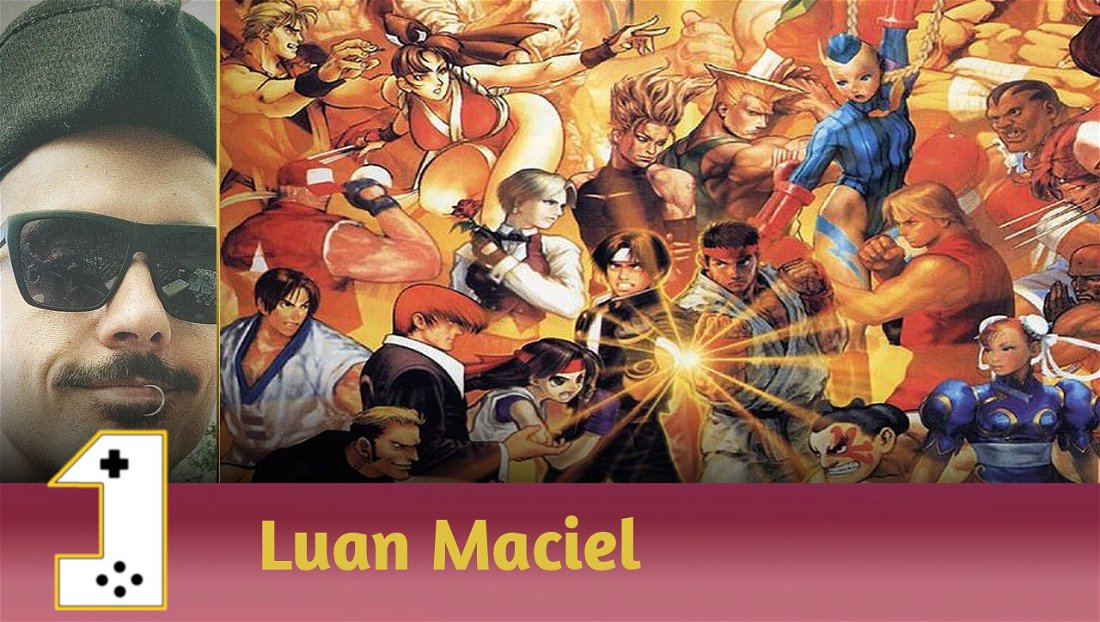

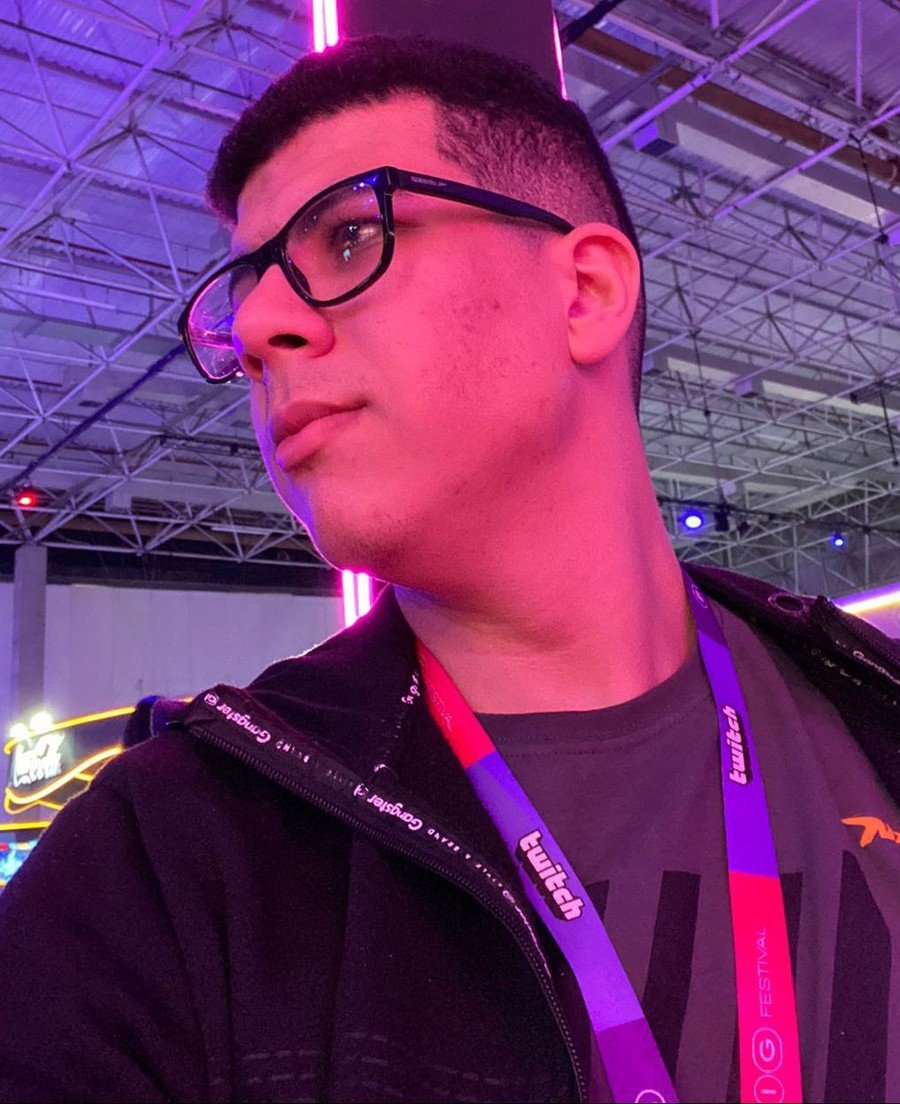

— Commenti 0
, Reazioni 1
Diventa il primo a commentare